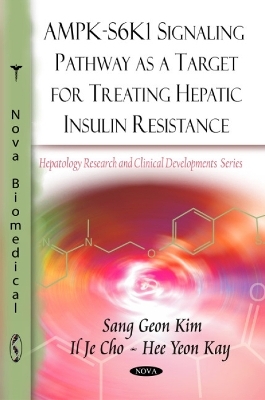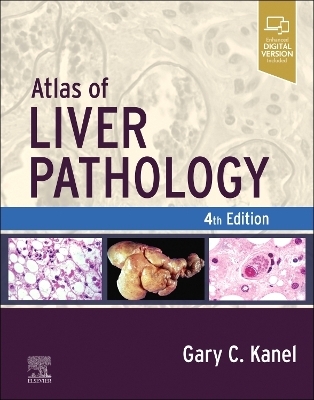
AMPK-S6K1 Signaling Pathway as a Target for Treating Hepatic Insulin Resistance
Seiten
2010
Nova Science Publishers Inc (Verlag)
978-1-60876-693-2 (ISBN)
Nova Science Publishers Inc (Verlag)
978-1-60876-693-2 (ISBN)
Hepatic insulin resistance and altered insulin metabolism play a role in the pathogenesis of liver disease. This book discusses the regulatory role of the AMPK-S6K1 pathway in terms of enhancing insulin receptor signalling with insulin receptor substrate-1/2 and phosphatidylinositol phosphate kinase activity.
Hepatic insulin resistance and altered insulin metabolism, as characterised by the desensitisation of hepatic parenchymal cells to insulin, play a role in the pathogenesis of liver disease, particularly resulting in steatosis and steatohepatitis. By the same token, type II diabetic patients are at higher risk for developing liver diseases, including steatosis, hepatitis, cirrhosis, and hepatocellular carcinoma. On the other hand, established liver disease from any cause leads to glucose intolerance and peripheral insulin resistance systemically. The link between insulin resistance and liver pathology reviewed in this book suggests that insulin resistance is closely related with a variety of liver diseases. Recent evidence indicates that the AMP activating protein kinase (AMPK) in conjunction with p70 ribosomal S6 kinase 1 (S6K1) serves as a key signalling pathway regulating insulin-dependent physiological functions; thus, this pathway serves as a target for the therapy of diseases associated with insulin resistance. In this chapter, the regulatory role of the AMPK-S6K1 pathway is discussed in terms of enhancing insulin receptor signalling with insulin receptor substrate-1/2 and phosphatidylinositol phosphate kinase activity, which may contribute to preventing and/or treating insulin resistance in the liver.
Hepatic insulin resistance and altered insulin metabolism, as characterised by the desensitisation of hepatic parenchymal cells to insulin, play a role in the pathogenesis of liver disease, particularly resulting in steatosis and steatohepatitis. By the same token, type II diabetic patients are at higher risk for developing liver diseases, including steatosis, hepatitis, cirrhosis, and hepatocellular carcinoma. On the other hand, established liver disease from any cause leads to glucose intolerance and peripheral insulin resistance systemically. The link between insulin resistance and liver pathology reviewed in this book suggests that insulin resistance is closely related with a variety of liver diseases. Recent evidence indicates that the AMP activating protein kinase (AMPK) in conjunction with p70 ribosomal S6 kinase 1 (S6K1) serves as a key signalling pathway regulating insulin-dependent physiological functions; thus, this pathway serves as a target for the therapy of diseases associated with insulin resistance. In this chapter, the regulatory role of the AMPK-S6K1 pathway is discussed in terms of enhancing insulin receptor signalling with insulin receptor substrate-1/2 and phosphatidylinositol phosphate kinase activity, which may contribute to preventing and/or treating insulin resistance in the liver.
Introduction; Insulin signaling in hepatocytes; Clinical & preclinical drugs for the treatment of hepatic insulin resistance; Conclusion; Index.
| Erscheint lt. Verlag | 21.5.2010 |
|---|---|
| Zusatzinfo | Illustrations |
| Verlagsort | New York |
| Sprache | englisch |
| Maße | 230 x 155 mm |
| Gewicht | 106 g |
| Themenwelt | Medizinische Fachgebiete ► Innere Medizin ► Hepatologie |
| ISBN-10 | 1-60876-693-4 / 1608766934 |
| ISBN-13 | 978-1-60876-693-2 / 9781608766932 |
| Zustand | Neuware |
| Haben Sie eine Frage zum Produkt? |
Mehr entdecken
aus dem Bereich
aus dem Bereich
Diagnostik, Differenzialdiagnostik, Therapieansätze
Buch (2016)
Thieme (Verlag)
CHF 148,80
Buch | Softcover (2020)
Wiley-Blackwell (Verlag)
CHF 119,95
Buch | Hardcover (2023)
Elsevier - Health Sciences Division (Verlag)
CHF 369,95


